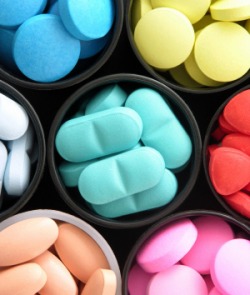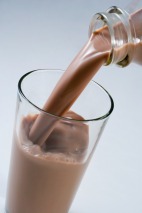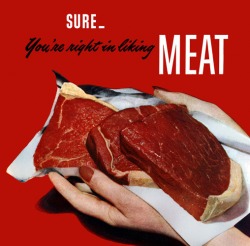 Stirling Mortlock I found this humorous article today. People that made the list include Magnus Ver Magnusson and Commander Flex Plexico. The first place name is patently ridiculous (and manly). How does YOUR name compare? Read the 9 Manliest Names in the World
Previous posts have focused on some good exercises and fitness tips. But how about some functional exercises? The following five strongman events tests your strength and focus in real-life scenarios. Check out the full article for videos too.
The TIre Flip
The tire flip is an explosive movement that requires a triple extension of the hips, knees and ankles. Flip as many times as possible and use this as a finisher to any of your workouts. explosive movement that requires a triple extension of the hips, knees and ankles. Flip as many times as possible and use this as a finisher to any of your workouts.his as a finisher to any of your workouts. The Farmer's Walk
The farmer's walk tests your functional strength in grip, upper back and core. The farmer's walk can also be performed with dumbbells. Overhead Press
The overhead press in strongman can be tested in several different ways. You can use a log, axle, barbell or dumbbells. The overhead press is one of the best complete tests of strength. Sandbag CarrySandbag Carry
Sandbags are one of the best tests for grip strength, arms and back power. This carry should be performed as fast as possible. Atlas Stone
The atlas stone is a good test of your quadriceps, core and manhood. Pull the weight tight into chest and drive through reps with your hips.
 Almost every athlete has been told at some point that lactic acid is responsible for muscle soreness. While the two are certainly correlated in exercise, latest studies show that lactic acid is NOT directly responsible - understanding lactic acid's role in muscle physiology can maximize your workouts' effects. From a NYTimes article ( source): "The understanding now is that muscle cells convert glucose or glycogen to lactic acid. The lactic acid is taken up and used as a fuel by mitochondria, the energy factories in muscle cells.
Mitochondria even have a special transporter protein to move the substance into them, Dr. Brooks found. Intense training makes a difference, he said, because it can make double the mitochondrial mass.
It is clear that the old lactic acid theory cannot explain what is happening to muscles, Dr. Brooks and others said."
 Even if you've been maintaining a healthy diet (good for you), the truth is that some nutrients are harder to get than others. This can be due to external factors such as natural scarcity, or internal factors such as difficulty absorbing. Men's Health's Jason Stevenson recently published a useful report on such nutrients. Luckily, once you recognize this issue, the fix is simple. Whether you choose to take a multivitamin or adjust your diet accordingly, these are 5 nutrients you should pay extra attention to ( source): Vitamin DThis vitamin's biggest claim to fame is its role in strengthening your skeleton. But vitamin D isn't a one-trick nutrient: A study in Circulation found that people deficient in D were up to 80 percent more likely to suffer a heart attack or stroke. The reason? D may reduce inflammation in your arteries. The shortfall: Vitamin D is created in your body when the sun's ultraviolet B rays penetrate your skin. Problem is, the vitamin D you stockpile during sunnier months is often depleted by winter, especially if you live in the northern half of the United States, where UVB rays are less intense from November through February. Case in point: When Boston University researchers measured the vitamin D status of young adults at the end of winter, 36 percent of them were found to be deficient. Hit the mark: First, ask your doctor to test your blood levels of 25-hydroxyvitamin D. "You need to be above 30 nanograms per milliliter," says Michael Holick, M.D., Ph.D., a professor of medicine at Boston University. Come up short? Take 1,400 IU of vitamin D daily from a supplement and a multivitamin. That's about seven times the recommended daily intake for men, but it takes that much to boost blood levels of D, says Dr. Holick. MagnesiumThis lightweight mineral is a tireless multitasker: It's involved in more than 300 bodily processes. Plus, a study in the Journal of the American College of Nutrition found that low levels of magnesium may increase your blood levels of C-reactive protein, a key marker of heart disease. The shortfall: Nutrition surveys reveal that men consume only about 80 percent of the recommended 400 milligrams (mg) of magnesium a day. "We're just barely getting by," says Dana King, M.D., a professor of family medicine at the Medical University of South Carolina. "Without enough magnesium, every cell in your body has to struggle to generate energy." Hit the mark: Fortify your diet with more magnesium-rich foods, such as halibut and navy beans. Then hit the supplement aisle: Few men can reach 400 mg through diet alone, so Dr. King recommends ingesting some insurance in the form of a 250 mg supplement. One caveat: Scrutinize the ingredients list. You want a product that uses magnesium citrate, the form best absorbed by your body. Vitamin B12Consider B12 the guardian of your gray matter: In a British study, older people with the lowest levels of B12 lost brain volume at a faster rate over a span of 5 years than those with the highest levels. The shortfall: Even though most men do consume the daily quota of 2.4 micrograms, the stats don't tell the whole story. "We're seeing an increase in B12 deficiencies due to interactions with medications," says Katherine Tucker, Ph.D., director of a USDA program at Tufts University. The culprits: acid-blocking drugs, such as Prilosec, and the diabetes medication metformin. Hit the mark: You'll find B12 in lamb and salmon, but the most accessible source may be fortified cereals. That's because the B12 in meat is bound to proteins, and your stomach must produce acid to release and absorb it. Eat a bowl of 100 percent B12-boosted cereal and milk every morning and you'll be covered, even if you take the occasional acid-blocking med. However, if you pop Prilosec on a regular basis or are on metformin, talk to your doctor about tracking your B12 levels and possibly taking an additional supplement. PotassiumWithout this essential mineral, your heart couldn't beat, your muscles wouldn't contract, and your brain couldn't comprehend this sentence. Why? Potassium helps your cells use glucose for energy. The shortfall: Despite potassium's can't-live-without-it importance, nutrition surveys indicate that young men consume just 60 percent to 70 percent of the recommended 4,700 mg a day. To make matters worse, most guys load up on sodium: High sodium can boost blood pressure, while normal potassium levels work to lower it, says Lydia A. L. Bazzano, M.D., Ph.D., an assistant professor of epidemiology at Tulane University. Hit the mark: Half an avocado contains nearly 500 mg potassium, while one banana boasts roughly 400 mg. Not a fan of either fruit? Pick up some potatoes—a single large spud is packed with 1,600 mg. IodineYour thyroid gland requires iodine to produce the hormones T3 and T4, both of which help control how efficiently you burn calories. That means insufficient iodine may cause you to gain weight and feel fatigued. The shortfall: Since iodized salt is an important source of the element, you might assume you're swimming in the stuff. But when University of Texas at Arlington researchers tested 88 samples of table salt, they found that half contained less than the FDA-recommended amount of iodine. And you're not making up the difference with all the salt hiding in processed foods—U.S. manufacturers aren't required to use iodized salt. The result is that we've been sliding toward iodine deficiency since the 1970s. Hit the mark: Sprinkling more salt on top of an already sodium-packed diet isn't a great idea, but iodine can also be found in a nearly sodium-free source: milk. Animal feed is fortified with the element, meaning it travels from cows to your cereal bowl. Not a milk man? Eat at least one serving of eggs or yogurt a day; both are good sources of iodine.
 Navy SEAL (Sea, Air, Land) is the the United States' principal naval special operations forces. Selective and competent, SEALs are among some of the best soldiers in the US military. All potential candidates must take Physical Screening Test (PST). Even if you're not training to be a SEAL, the PST makes for a good benchmark of your own fitness, and can be used as a quick, full body workout that requires little equipment. Here are the minimum requirements from the official Navy SEALs website: 500-yard swim using breast and/or sidestroke in less than 12 minutes and 30 seconds
10-minute rest
Perform a minimum of 42 push-ups in 2 minutes
2-minute rest
Perform a minimum of 50 sit-ups in 2 minutes
2-minute rest
Perform a minimum of 6 pull-ups (no time limit)
10-minute rest
Run 1 ½ miles wearing RUNNING SHOES and SHORTS in under 11 minutesRemember, these are the minimum requirements for the PST. Challenge yourself to go above and beyond and you'll see more significant improvements.
 Heather Mitts! Pretty cool stuff. I wrote about a favorite supplement of mine, Force Factor, in an article about how to build muscle. I found out they've recently signed Heather Mitts as a representative. Heather is much more fun to look at than, say, Adam Nelson. Anyways, here's the press release: Heather Mitts is the newest addition to a growing list of athletes endorsing the sports nutrition brand Force Factor. The Boston-based supplement company made an official announcement on Wednesday. Mitts, a member of the United States Women's national soccer team, becomes the first woman to join the Force Factor roster. The announcement comes as the United States Men's national team competes at the 2010 World Cup in South Africa. Currently playing for the Philadelphia Independence, Mitts is also familiar with the Boston area, having played for the Boston Breakers in their inaugural 2009 Women's Professional Soccer season. Mitts is a two-time Olympic Gold-medalist with the USWNT. In addition to exhibiting Force Factor branded products across digital, print, and other forms of media, Mitts will also represent Force Factor to the billions of soccer fans worldwide. "I am honored to be the first woman to join the Force Factor team," says Mitts, who is represented by Dan Levy and marketing is handled by Eric Liebler, both of Wasserman Media Group. "I look forward to representing Force Factor and sharing with fans ways they can improve their workouts."
 The best workout drink? In my previous post, I talked about the importance of selecting good meats in diet to maximize your workouts. Equally important, if not more, is proper hydration. Humans can live weeks without food, but only last a few days at most without water. A strenuous workout can cost almost 1.5 liters of water in sweat. So what's the best to drink while working out? Everyone knows about Gatorade, and water is always a good fallback. Interestingly enough, chocolate milk has been shown to be a good choice! ( CBS News) In fact, Michael Phelps can be seen drinking Carnation Instant Breakfast between races. Sports drinks include carbs to include the glycogen loss associated with heavy exercise. Milk contains these carbs, but also includes proteins, which research shows increases glycogen uptake. "The findings suggest that chocolate milk has an optimal ratio of carbohydrates to protein to help refuel tired muscles," according to researcher Joel M. Stager, PhD, Indiana University. According to the study, athletes replenishing with chocolate milk were able to go 50% longer on a stationary bike test after they had been worked to exhaustion. Some newer energy drinks, such as Endurox, attempt to mimic the carb/protein ratios of chocolate milk, but fared poorly in performance testing. Researcher Jeanne D. Johnston, MA, says it may have to do with the different composition of the sugars in the milk. Another theory is that the sugars in the milk may be better absorbed in the gut than those in the Endurox. This is enough to convince me to at least try drinking chocolate during my next workout! ( source)
 For an athlete, meat is an essential part of good diet. It provides the protein and other nutrients needed to build and maintain muscle and strength. But meats also contain fats and cholesterol, both of which contribute to cardiovascular issues and potentially decreased performance. It is important to optimize the meat in your diet so you get the most benefits to muscularity while minimizing health risks. Some on the list, such as turkey and fish, aren't surprising. But some interesting meats such as Bison make a showing. Be sure to check out the full article by Dustin Driver 1) Buffalo (Bison)A hunk of buffalo has far less fat than steak and buffalo are generally grass-fed, which means healthier meat. Let’s compare burgers: Your typical lean hamburger (10% fat) contains about 0.32 oz (9 g) of fat. Buffalo burgers, on the other hand, contain less than half that, about 0.14 oz (4 g). Not bad for a tasty burger. There was a point when buffalo were endangered, but the beasts have made a comeback, especially on ranches. Today, buffalo meat is readily available in most grocery stores.
2) PorkPork chops used to be on the doctors’ hit list. Today, however, pork is “the other white meat” and is a healthy alternative to red meat. And when it’s eaten in reasonable quantities (8 oz), a pork chop can be quite good for you. Pork chops can be relatively lean, but they’re typically not as low-fat as chicken or fish. By contrast, however, a USDA, University of Wisconsin and Maryland study found that a 3 oz (85 g) serving of pork tenderloin contains 0.105 oz (2.98 g) of fat and that the same portion of skinless chicken breast contains 0.106 oz (3.03 g) of fat.
If chops are still your thing, look for lean ones, and trim the fat before you eat them. A typical pork chop, with the fat cut off, contains about 0.3 oz (8 g) of fat. Beware, however, of cured pork, like ham and bacon; both meats may contain nitrates and nitrites as preservatives, which have been linked to cancer.
3) ChickenWhite meat is much better for you than red -- that’s a well-known fact. As such, chicken (not deep-fried) is a great alternative to red meats. It’s low in fat -- without the skin -- and it’s pretty tasty if it’s prepared correctly. Chicken is a great source of protein and, as an added bonus, it’s less expensive than beef. But remember, there’s always the risk of E. coli infection when you’re dealing with chicken. Be sure to cook or heat it to an internal temperature of at least 165F to kill off the bugs.
Also, charred grilled chicken can contain some cancer-causing chemicals, such as heterocyclic amines, so limit your consumption of well-blackened chicken.
4) TurkeyThis big bird never saw it coming. Domestic turkey is a relatively recent addition to the world’s protein menu, and it’s great for you. Turkey is generally a white meat (turkey breast), but it packs more flavor than chicken, and its dark meat can be downright gamy. Turkey meat is also relatively low in fat: one 4.9 oz (140 g) serving of skinless roasted turkey contains about 0.25 oz (7 g) of fat.5) FishA properly cooked hunk of fish can be as satisfying as a great steak. Plus, many fish (typically salmon and tuna) are packed with omega-3 fatty acids, which have been linked to decreased rates of heart disease.Circulation published a study that suggests lean, white fish, such as cod, don’t provide the same health benefits as fattier fish do. Another extensive EPIC study found that people who eat lots of fish are less likely to develop colon cancer than those who don’t. But be careful: big fish like tuna can contain high levels of mercury, which is a poison to the human body.
So, how much fish can you eat and be safe? It depends. Avoid large fish that eat other fish -- tuna, swordfish and shark -- and stick to smaller fish, which tend to contain less mercury than bigger fish. Local levels of mercury vary; check with your nearby fish and game agency to see which fish contain high levels of mercury.
|













 RSS Feed
RSS Feed